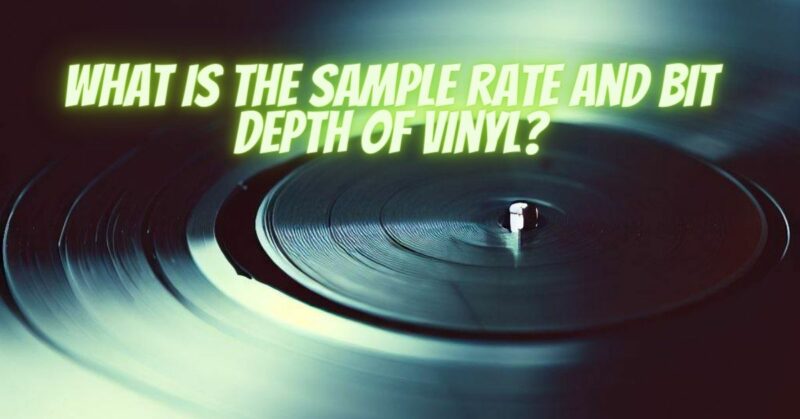In the era of digital audio dominance, vinyl records maintain their allure, offering a unique and warm sound that appeals to audiophiles and music enthusiasts. While digital audio relies on sample rates and bit depths to capture and reproduce sound, vinyl records operate on a different principle. In this article, we’ll explore the sample rate and bit depth specifications for vinyl records and how they differ from their digital counterparts.
Analog vs. Digital Audio:
Analog and digital audio are fundamentally distinct in their recording and playback methods:
- Analog Audio (Vinyl): Vinyl records store sound as continuous waveforms in the form of grooves etched onto the record’s surface. The stylus on the turntable’s tonearm reads these grooves, translating them into electrical signals that are then amplified and sent to speakers. Analog audio is continuous and infinite in resolution.
- Digital Audio: Digital audio, on the other hand, samples the analog sound wave at regular intervals and represents each sample with binary data. This process involves two key specifications: sample rate and bit depth.
Sample Rate and Bit Depth in Digital Audio:
- Sample Rate: In digital audio, the sample rate determines how many times per second the analog sound wave is sampled. Common sample rates include 44.1 kHz (kilohertz) for CDs and 48 kHz for many digital audio formats. Higher sample rates, such as 96 kHz or 192 kHz, are used for high-resolution audio.
- Bit Depth: Bit depth refers to the number of bits used to represent each sample. Common bit depths are 16-bit and 24-bit. A higher bit depth provides greater dynamic range and audio resolution.
Vinyl Records: No Sample Rate or Bit Depth:
Vinyl records, being analog, do not have sample rates or bit depths in the same way digital audio does. Instead, they store sound as continuous grooves that are an analog representation of the original audio signal. This means that vinyl records capture an infinite range of frequencies and dynamics, in contrast to the discrete, quantized nature of digital audio.
Vinyl’s Unique Characteristics:
Vinyl records are celebrated for their unique audio characteristics:
- Warmth and Character: Vinyl imparts a warmth and character to music that some listeners find appealing. The analog nature of vinyl introduces subtle imperfections, such as surface noise and vinyl’s inherent limitations, which contribute to its distinct sonic signature.
- Tactile Experience: Handling vinyl records, setting up a turntable, and manually placing the needle offer a tactile and ritualistic aspect to music listening that many enthusiasts cherish.
- Cover Art and Packaging: Vinyl records often feature elaborate cover art and packaging, making them collectible and cherished items beyond their audio content.
While digital audio relies on sample rates and bit depths to capture and reproduce sound, vinyl records embrace analog sound in its purest form. The absence of sample rates and bit depths in vinyl allows for a different listening experience—one that combines the nostalgia of a bygone era with the undeniable allure of analog warmth. Whether you prefer the precision of digital or the character of vinyl, both formats offer unique ways to enjoy the magic of music.


